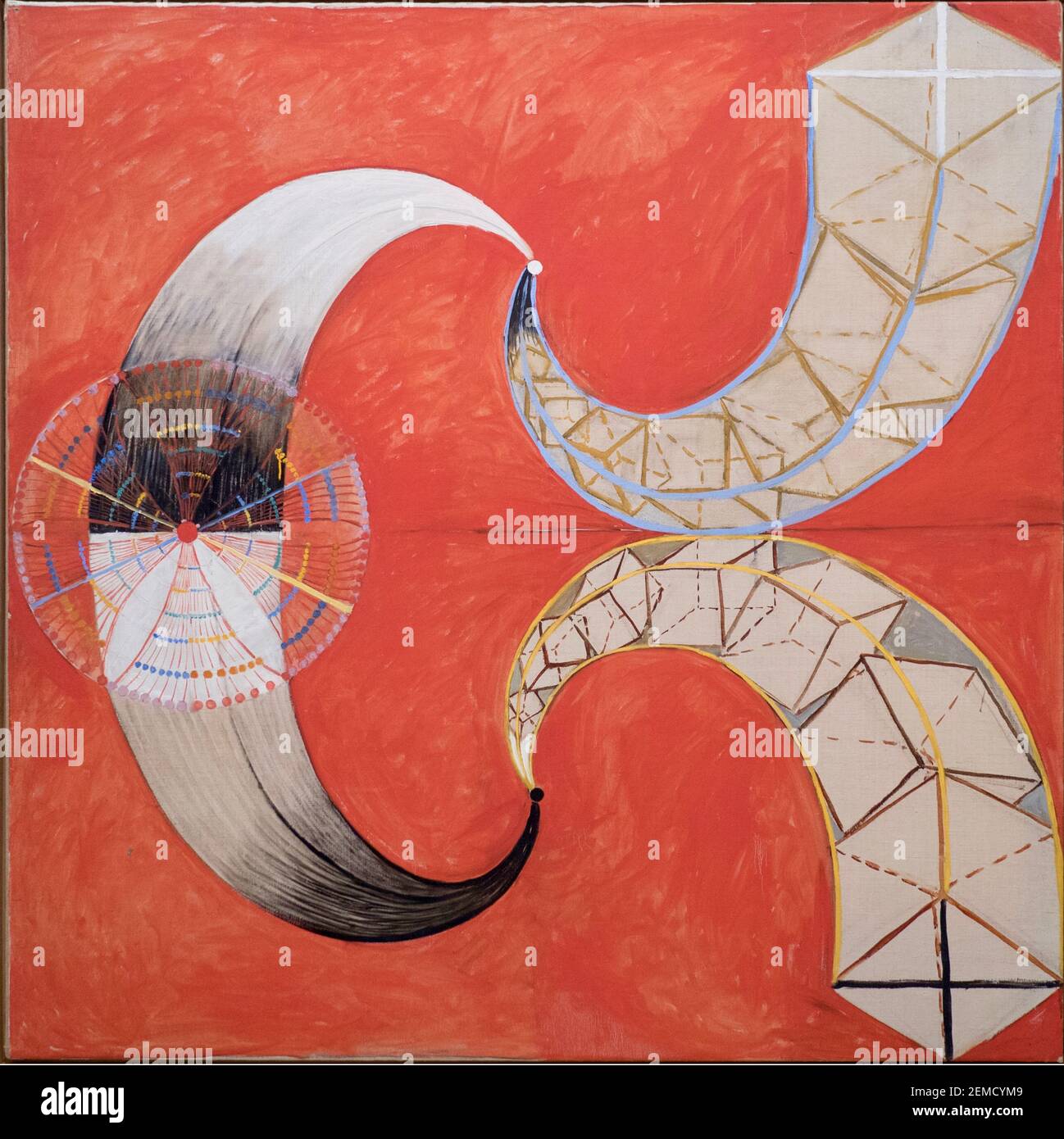The Swan no 9 by Hilma af Klint - Abstract artwork from the Swedish artist-mystic. Swirls and twirls on a red background.

Image details
Contributor:
steeve-x-art / Alamy Stock PhotoImage ID:
2EMCYM9File size:
70.5 MB (3 MB Compressed download)Releases:
Model - no | Property - noDo I need a release?Dimensions:
4960 x 4965 px | 42 x 42 cm | 16.5 x 16.6 inches | 300dpiDate taken:
1915More information:
This image is a public domain image, which means either that copyright has expired in the image or the copyright holder has waived their copyright. Alamy charges you a fee for access to the high resolution copy of the image.
The Third Secret Hilma Af Klint is one my favourite painters. At such an early date (preceding any man), she created new forms from her imagination, abstract forms, that connect to, and exist, on a celestial plane. af Klint studied Theosophy and Rosicrucianism, expanding her consciousness, trusting that “knowledge of a deeper spiritual reality could be achieved through focused attention on intuition, meditation, and other means of transcending normal human consciousness.” All from 1906-07 onwards. Her paintings and drawings emit an aura, her aura “drawn” into a cosmic aura, as a revelation of spirit – invisible dimensions that exist beyond the visible world – a connection from our reality to the spirit of the cosmos. Childhood; youth; adulthood; primordial chaos; eros; evolution; the altar and the tree of knowledge. All knowledge that allows us access to the divine, that opens us not to phenomena, but to the noumenal experiences of the felt, spiritual sublime. Imagine af Klint painting her huge canvases on the floor of her studio, so many years before Jackson Pollock attempted the same connection to altered consciousness, and creating these symbolic and sensation/al masterpieces. Then to have the prescience to understand that the world was not ready for her art, would not understand it, had no way of comprehending the enormity of her artistic enquiry. To leave “a radical body of work – unprecedented in its use of colour, scale and composition – which she hoped future audiences might be better able to sense and decode.” All in hope! Dr Marcus Bunyan